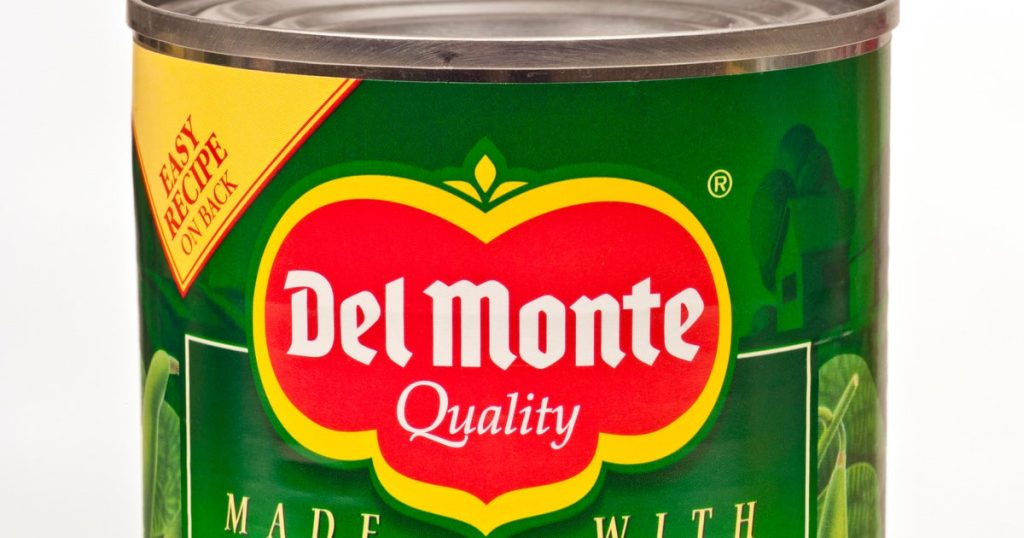Del Monte Foods, a well-known name in the canned vegetables and fruits sector, has filed for Chapter 11 bankruptcy, marking a significant turning point in its nearly 140-year history. The company seeks a buyer to reposition itself amid shifting consumer preferences and escalating operational challenges. CEO Greg Longstreet emphasized that a court-supervised sale process is the most effective approach to facilitate a turnaround for the company.
| Article Subheadings |
|---|
| 1) Overview of Del Monte’s Bankruptcy Filing |
| 2) Financial Details and Future Plans |
| 3) The Impact of Changing Consumer Preferences |
| 4) Industry Trends and Competitors |
| 5) Conclusion and Future Outlook |
Overview of Del Monte’s Bankruptcy Filing
Del Monte Foods announced its decision to file for Chapter 11 bankruptcy in a bid to restructure its operations efficiently. In the company’s statement, CEO Greg Longstreet noted that after a comprehensive evaluation of available avenues, a court-supervised sale process was deemed the most effective way to facilitate a corporate turnaround. The intent is not only to stabilize the company but also to set it on a sturdier path for the future.
The filing comes at a time when the company is battling numerous internal and external pressures, resulting in a lowered market position compared to competitors. The company’s location in Walnut Creek, California, has historically been a strategic advantage; however, changing market dynamics have turned a once-thriving brand into a challenging case for its stakeholders.
Financial Details and Future Plans
Del Monte Foods reported estimated liabilities and assets ranging between $1 billion to $10 billion as per its court filings with the U.S. Bankruptcy Court for the District of New Jersey. As part of the restructuring support agreement (RSA) with its lenders, the company has secured a significant financial lifeline of $912.5 million. This funding will facilitate continued operations during the sale process.
Furthermore, the sale will likely include “all or substantially all of the Company’s assets,” suggesting a comprehensive approach to its restructuring efforts. The company aims to prioritize finding the highest or best offers for its assets while ensuring operational continuity during this tumultuous period.
The Impact of Changing Consumer Preferences
One of the primary reasons cited for Del Monte’s financial difficulties is the shift in consumer preferences towards healthier alternatives, away from the traditional, preservative-laden canned goods that made the brand popular. According to data analytics firm Debtwire, Del Monte is the fourth food and beverage company to file for Chapter 11 in recent times, highlighting a trend affecting established brands in the industry.
Sarah Foss, the global head of legal and restructuring at Debtwire, mentioned, “Consumer demand has declined, causing the company to incur increased costs related to surplus inventory.” This situation has forced Del Monte to engage in aggressive promotional activities to move its products off shelves. The need for significant promotional spending has further compounded the company’s financial challenges.
Industry Trends and Competitors
Del Monte’s bankruptcy reflects changing trends within the food and beverage industry. Competitors are increasingly focused on producing fresh and healthier products, utilizing cleaner labels and organic ingredients to attract the modern consumer. This paradigm shift has compelled traditional companies to rethink their strategies and explore innovative solutions to meet the evolving market demands.
Moreover, the landscape is becoming increasingly competitive, with new entrants offering disruptive products that are appealing to health-conscious consumers. This trend is prompting long-standing brands to examine their product lines critically. Del Monte’s recent delays and layoffs are indicative of the broader struggles that entrenched brands are facing as they attempt to navigate these turbulent waters.
Conclusion and Future Outlook
As Del Monte Foods embarks on this challenging journey, its ability to adapt and capitalize on emerging industry trends will be crucial for its survival. While the initial focus will be on securing a buyer, the long-term viability of the brand depends on how effectively it can pivot towards aligning its product offerings with modern consumer demands.
Stakeholders, investors, and employees will be closely monitoring the outcome of this bankruptcy filing, hoping for a speedy recovery that revitalizes the brand and places it back in favor with consumers. The coming months will be critical in determining whether Del Monte can successfully emerge from this restructuring phase as a stronger entity poised for growth.
| No. | Key Points |
|---|---|
| 1 | Del Monte Foods has filed for Chapter 11 bankruptcy in pursuit of a court-supervised buyer. |
| 2 | The company has secured $912.5 million from lenders for operational funding during the sale process. |
| 3 | Changing consumer preferences towards healthier options are contributing to the company’s decline. |
| 4 | Del Monte’s financial struggles reflect broader challenges faced by the food and beverage industry. |
| 5 | The outcome of the bankruptcy filing will be crucial for Del Monte’s future in the competitive market. |
Summary
In summary, Del Monte Foods’ Chapter 11 bankruptcy filing underscores not just the company’s struggles but also the evolving landscape of the food and beverage industry. As it seeks a potential buyer to regain its footing, the firm must pivot towards consumer preferences that favor healthier options. The support from lenders may provide a temporary respite, but the company’s long-term survival hinges on its ability to adapt and innovate in response to changing market demands.
Frequently Asked Questions
Question: Why did Del Monte Foods file for Chapter 11 bankruptcy?
Del Monte filed for Chapter 11 bankruptcy to restructure its operations and seek a buyer amid declining consumer preferences for canned goods.
Question: How much financial support has Del Monte secured during its bankruptcy proceedings?
Del Monte has secured $912.5 million from its lenders to support operations throughout the bankruptcy sale process.
Question: What factors have contributed to Del Monte’s financial difficulties?
Changing consumer preferences towards healthier, fresh food options and increased costs due to surplus inventory have significantly affected Del Monte’s finances.


